The Shorthand Reddit started this year with a call for writing Quotes of the Day (QOTD) in various systems. Here is the quote for 07 January 2020 in Stiefo (Aufbauschrift), translated into German (link to Reddit):
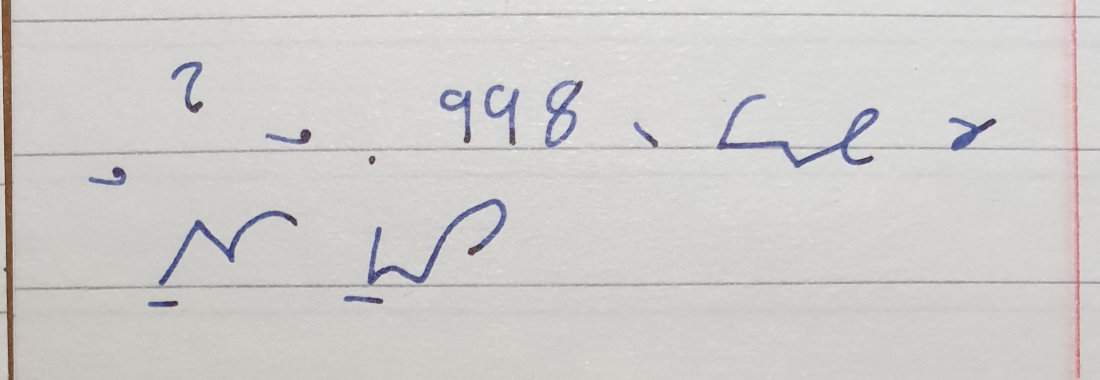
The Shorthand Reddit started this year with a call for writing Quotes of the Day (QOTD) in various systems. Here is the quote for 07 January 2020 in Stiefo (Aufbauschrift), translated into German (link to Reddit):

My work is a lot about groundwater. This example of Stiefo (Aufbauschrift) shows what Wikipedia says about it:
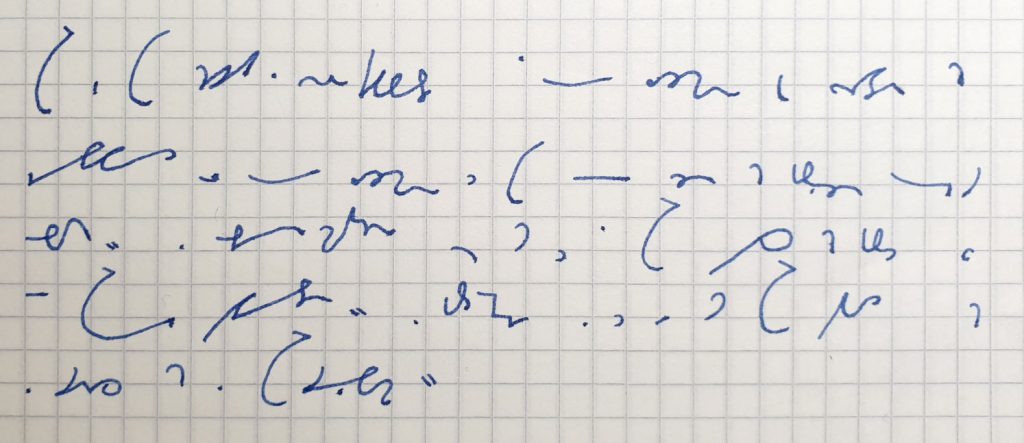
Here I used some brief forms. Grundschrift (basic level) already offers the possibilty to define your own abbreviations for common expressions, by writing a 1 step high consonant at 3 step size. I use the 3 step W for „Wasser“ (“water“). I create additional expressions by adding further letters, e. g. „Grundwasser“ (“groundwater”) by a g prefix, „Grundwasserleiter“ (“aquifer”) by a eit suffix:
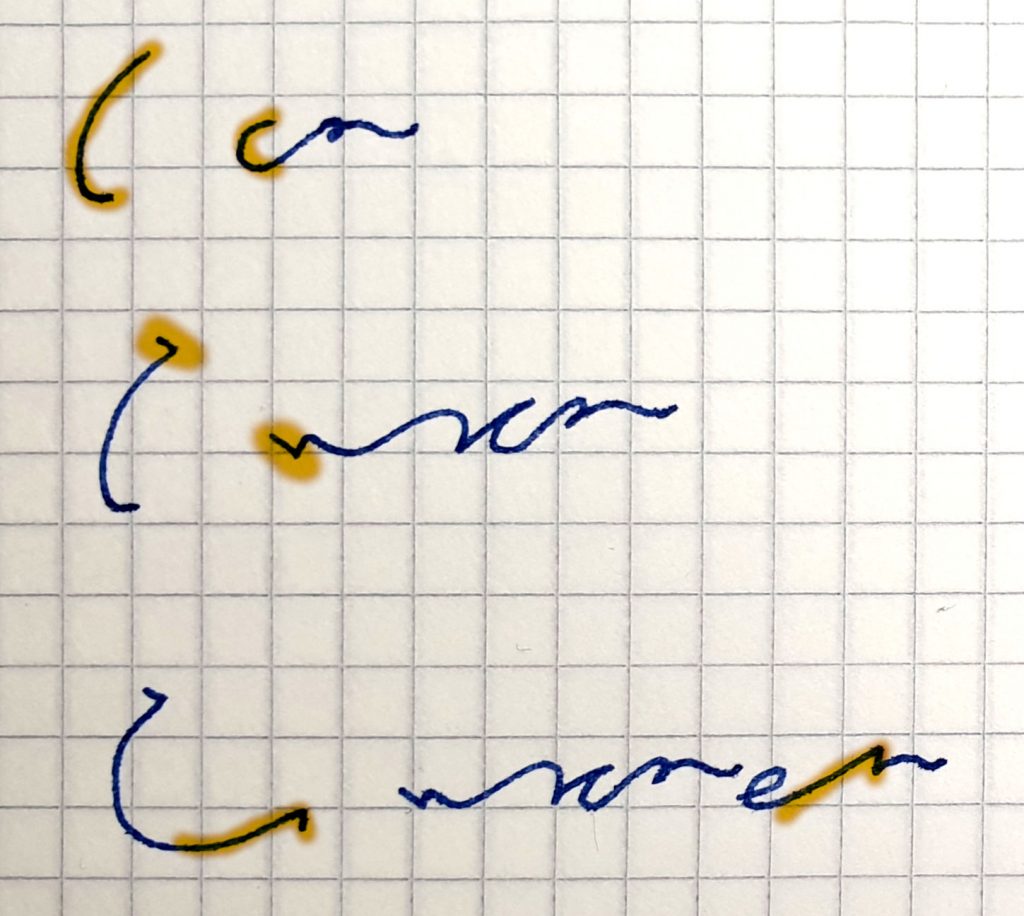
“Standard Stiefo” makes almost no use of loops in clockwise direction (except the point-size loop for -lich). I use a half-step clockwise loop on the baseline for -ologie (-ology). Similarly, the raised loop (not used here) means -graphie (-graphy). The one-step clockwise loop abbreviates the various forms of „halten“ according to the stem vowel (hold, contain, stop, etc.).

The lowered (i/ü/y position) letter h abbreviates „hier“ (“here”) in Aufbauschrift (advanced level). I also use it for „hin“ (“towards”) and for the prefix hydr(o)-. With this I can write „Hydrogeologie“ (“hydrogeology) quite concisely.
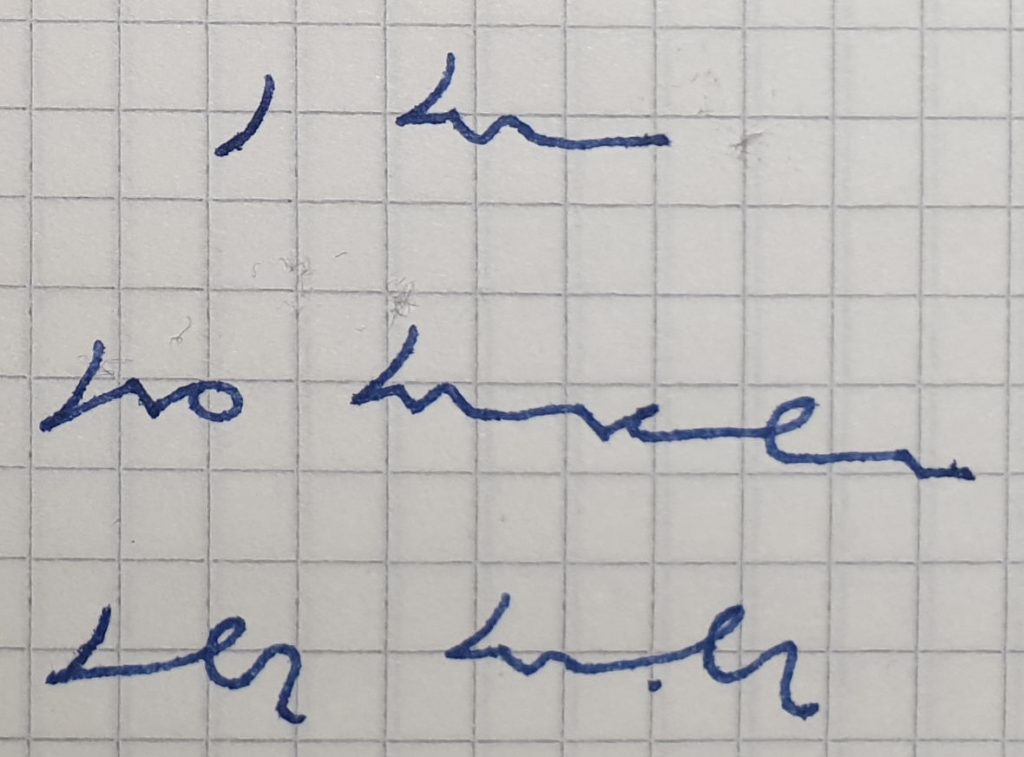
I was lazy and am a bit late for the April Reddit Monthly Thread on the topic “food”. Here’s my contribution – an old recommendation about the size of the meals of the day, in German (written in Stiefo Advanced Level) and English (written in very basic Teeline).
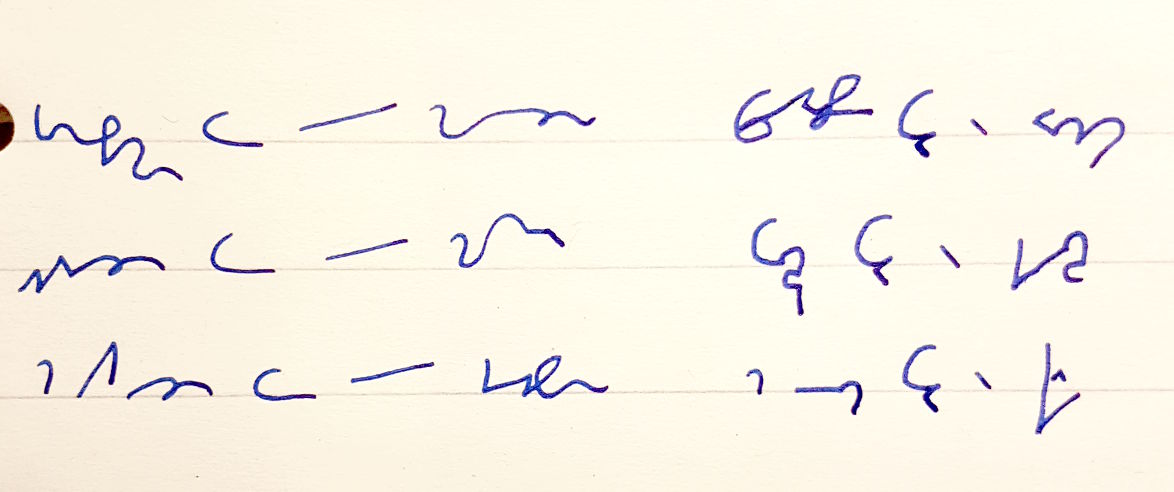
A bit of (still beginner’s level) Teeline for the Reddit weekly thread.
After a long hiatus I’m starting to practice Teeline again, because it surely would be useful for the English words I come across at work, which are clumsy to write in Stiefo.
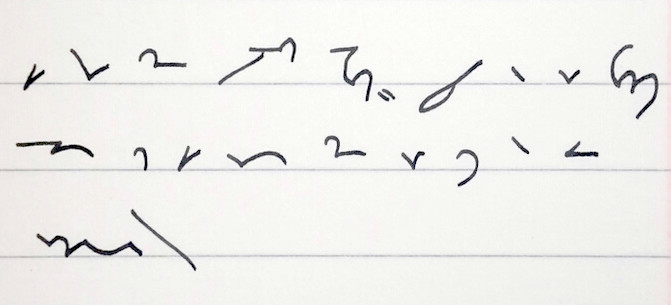
You can read this text in the German version of this post in Stiefo, for comparison.
I’m in the middle of unit 5 of the “Teeline Gold Course Book”, where the first “advanced” features of Teeline are introduced: word groupings. Common phrases like “I am”, “You will be”, but even “We should be able to” are written as a single outline. (To be exact, phrases with “… be able to” are written in two parts: word grouping and a full vowel a close to it.)
A short excerpt from the Simple English Wikipedia article about the violin. Embarassingly, I forgot “is played” in the first line. 🙁
![The violin is a string instrument which is played with a bow. It has four strings.[1] The strings are usually tuned to the notes G, D, A, and E. It is held between the left collar bone (near the shoulder) and the chin. Different notes are made by fingering with the left hand while bowing with the right.](http://steno.effjot.net/wp-content/uploads/2015/03/20150305-Violin.jpg)
In all Teeline texts I’ve seen so far, the letter G is joined to R with a sharp bend backwards to form the head of the G. Have a look at the word “garage” (the Teeline Gold Course Book authors seem very fond of that one…) below, number 1.

It would be much nicer to write a smooth connection, as in number 2. This happens quite often to me, as the Teeline G is similar to the German Stiefo M, which is joined smoothly to previous letters.
Am I missing a problem here, some conflict or potential for confusion? One thing I’m thinking about: if the R is not completely straight but gently curves into the G, it looks like an upwards-L.